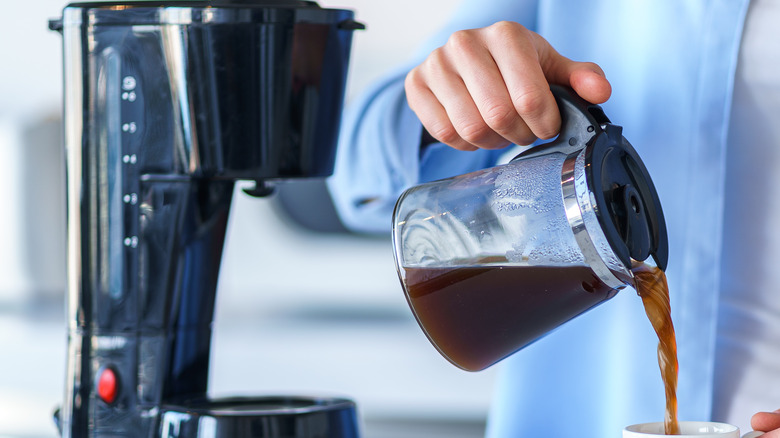Here's What Could Really Be Lurking In Your Coffee Maker
The thought of a fresh cup of coffee may be the only thing getting you out of bed in the morning, but it turns out your coffee maker is home to more than just caffeine. A National Sanitation Foundation (NSF) International Household Germ Study found that coffee maker water reservoirs were one of the top 10 dirtiest places in the average home.
Kelly Reynolds, a household germs expert from the University of Arizona, explained the phenomenon to The Huffington Post: "(Coffee makers) are certainly a moist environment where mold and bacteria are known to grow in high numbers."
In fact, 50% of the households surveyed had yeast and mold in their coffee reservoirs. Ready to be really grossed out? In the same study, coffee reservoirs were found to have 1,000 times more germs than toilet seats! The bacteria coliform was also detected in some machines, which indicates that Salmonella and E. coli could be present — both of which can have serious consequences if consumed.
This study concerned drip coffee makers, but one-cup machines can also be a breeding ground for bacteria. Roman Golash, a microbiologist from Chicago's Loyola University, did a test for CBS in 2015 that found a number of bacteria strains (including "staphylococcus, streptococcus and bacillus cereus" as well as "bacteria of the intestines, like e-coli") in coffee from one-cup machines.
How to stop bacteria from lurking in your coffee maker
How do you get rid of the dangerous bacteria lurking in your coffee maker — or prevent it from developing in the first place? While exact cleaning instructions vary depending on the type of coffee maker in question, you can follow some general advice to kill germs and bacteria.
Always read the manufacturer's manual and follow the cleaning instructions provided. Be sure to wash the carafe, filter basket, and lid with soap and warm water after every use. The National Sanitation Foundation recommends filling the water reservoir with undiluted white vinegar and then waiting half an hour before running the machine. Once the cycle is complete, run two additional cycles with plain water. If a vinegar smell persists, run additional water cycles until it dissipates. Running vinegar through the machine also removes the calcium buildup that is common in areas with hard water.
Following these simple steps will help ensure you're sipping a cup of joe, not a cup of germs.

